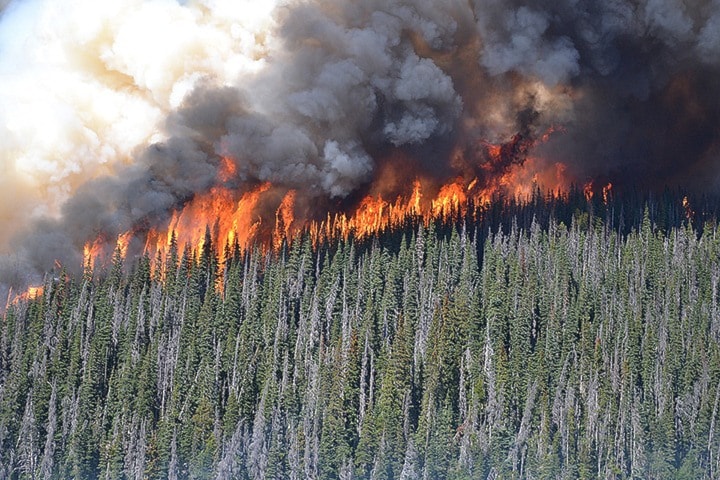The Fort McMurray wildfire that began May 1 has many people thinking about fire safety.
Muncipalities within the Regional District of Central Kootenay (RDCK) have been updating their wildfire protection plans.
Nakusp has had an official plan in place since the firestorm that took place in 2003. It’s on file with the forest service, fire department, and the RDCK.
“All identified areas were laid out by high, medium and low fire risk and prescriptions done,” said Nakusp fire chief Terry Warren. “Then many large and small projects were laid out, with fuel mitigation done throughout the RDCK and municipalities.”
Most communities in the Kootenays have some high risk areas. Problem areas include wherever there is thick brush, and a lot of coniferous trees on slopes and around homes. If a fire breaks out, embers can pile up against homes like snow, which can get into vents, under porches, and into wood piles.
To help prevent wildfires, the local fire department has been working with the BC Wildfire Service on a project at the Nakusp Rod and Gun archery and rifle range, using initial attack crews. Brush around the archery range is being gathered up and burned in a controlled setting.
Other areas in the village have been worked on as well. The forest area near Nakusp elementary school has been cleared of brush, and crews have also cleared to the north of the Arrow Lakes hospital. There was a fuel management project on Upper Brouse Loop Road as well.
Fire crews can only work on public lands. Private property must be maintained by the owner.
“Some homeowners have done extensive work to their properties which is encouraging to see, and some have started to do so,” said Warren.
Tips on how to protect your home from fire hazards can be found in fire smart manuals. These include cleaning up dead trees, ground fuels, logs, and limbing your trees up to six and a half to seven feet (1.8 to 2.1 meters).
Home Fire Smart manuals can be found online, and at the fire chief’s office in the Emergency Services Building.
